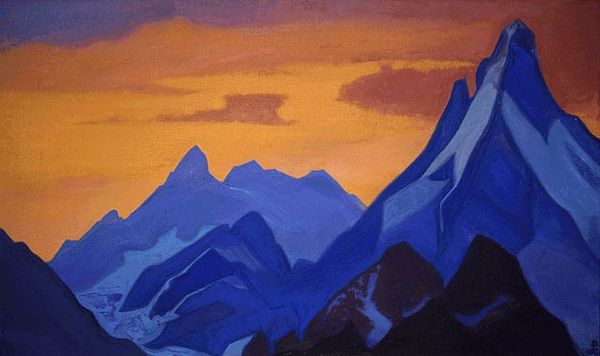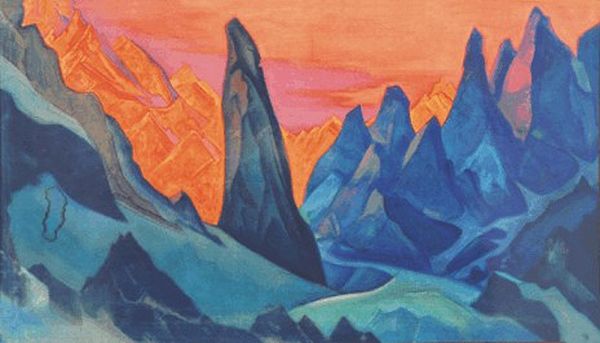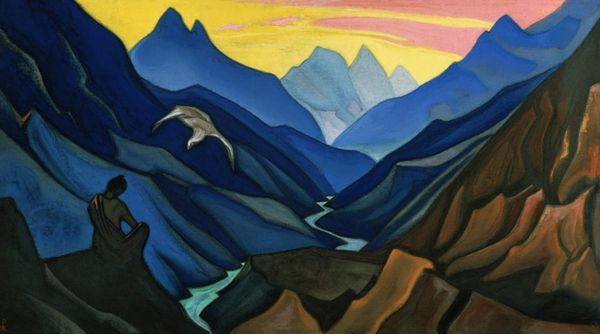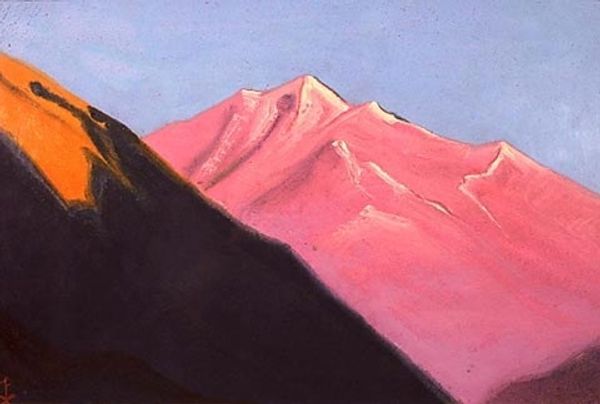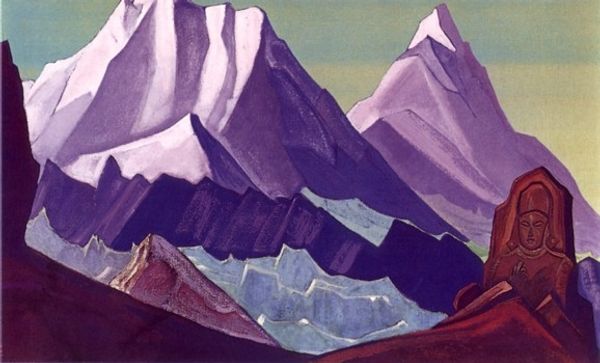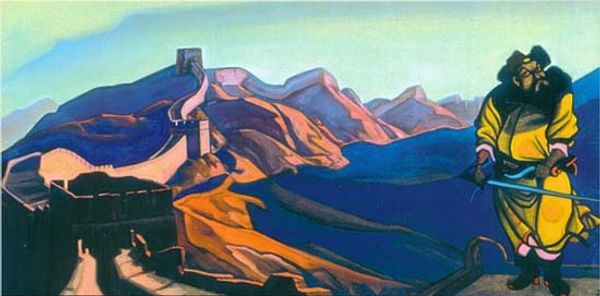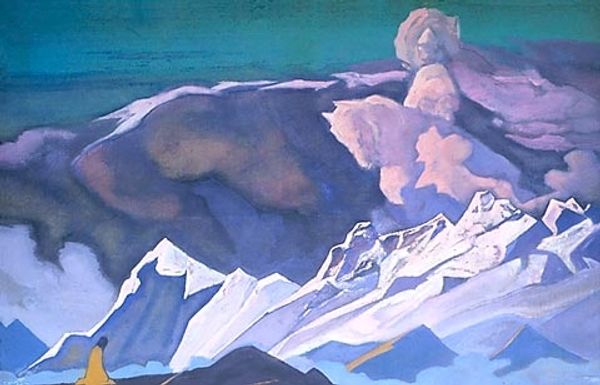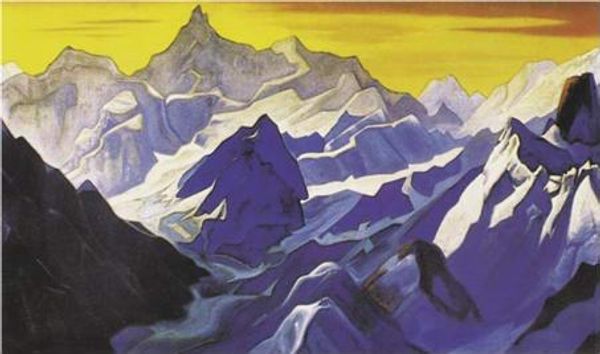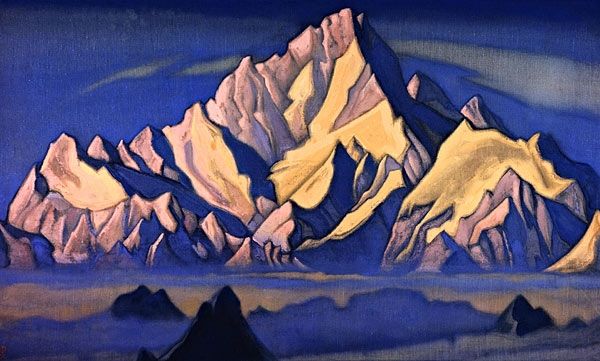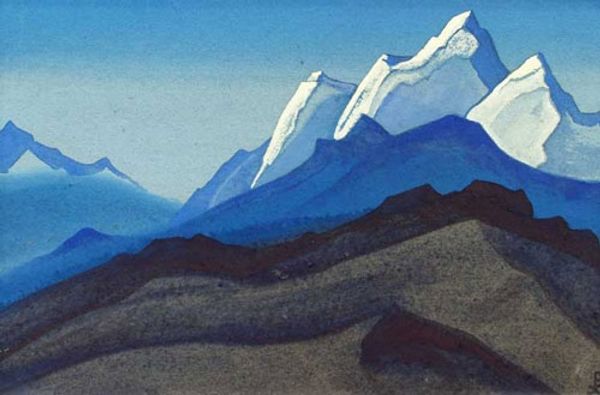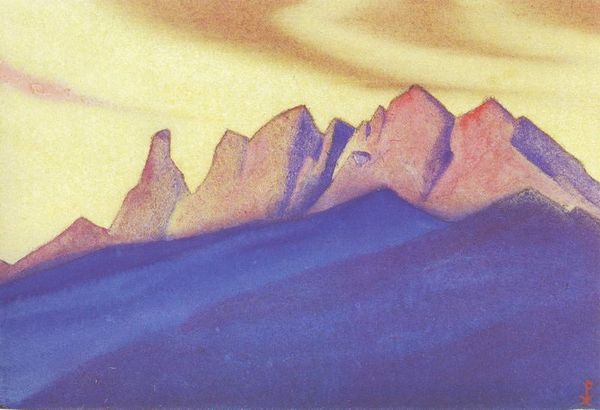
Copyright: Public domain
Curator: Allow me to introduce you to Nicholas Roerich's "Message from Shambhala (Arrow-letter)," painted in 1946. Roerich was a fascinating figure, deeply involved in Eastern mysticism, and this tempera on canvas embodies many of his beliefs and artistic themes. Editor: Right, first thought? That sky is doing something wild! The way it glows – almost feels like the mountains are breathing fire, yet they stand serene in this otherworldly landscape. The painting overall seems bathed in some sort of esoteric, holy light. Curator: The luminescence is deliberate, playing into Roerich's spiritual symbolism. He was heavily influenced by Theosophy, which incorporated Eastern and Western religious and philosophical traditions, and he envisioned Shambhala as a mystical kingdom. Notice the figure on the left; he appears to be an archer. Editor: Oh, I almost missed him there on the left! Melancholic figure—isolated, as if he's the messenger between two worlds—the earthy one and the… gold-dipped heaven. And the message, or the arrow…is it a threat? A call? The bow pulled tight evokes tension and impending action. Curator: Indeed. The "arrow-letter" represents the communication between this earthly plane and Shambhala. Roerich's utopian beliefs heavily informed his depictions of such subjects, painting cultural heroes who would restore the earth from future wars. In many of his works, Roerich illustrates his hopes for international unity and peace. Editor: Interesting. It makes me wonder about this landscape—these majestic, icy mountains seem more than physical spaces, rather, the peaks look like gateways, you know? The arrow shot isn't just across distance but dimensions or mindscapes. Also, it feels urgent to deliver. A feeling intensified by Roerich's use of such bold blues, yellows and oranges. I can't help feeling that peace is always painted in very dynamic colors! Curator: That tension between the grounded archer and these other-worldly peaks echoes a societal tension. As a socially active artist, Roerich believed that art had the ability to create unity by illuminating shared cultural histories, something very much illustrated here. Editor: It feels so complete with the combination of a divine presence with earthly, imperfect efforts. It suggests both divine intervention and necessary action are always crucial, not just in fairytales. And so that shot has a hopeful quality too. Curator: A vital sentiment when the work was created just after the devastation of WWII, at a point in world history that called for international solidarity and messages of hope for future unity and harmony, ideas perfectly encapsulated in Roerich's symbolism. Editor: Well, "Message from Shambhala" certainly feels timeless now—hope delivered on the wings of an arrow, even if a little scary, still potent. I'm ready for the message! Curator: I couldn't agree more. Roerich's symbolic landscapes certainly carry a weight for viewers from his day until now.
Comments
No comments
Be the first to comment and join the conversation on the ultimate creative platform.

